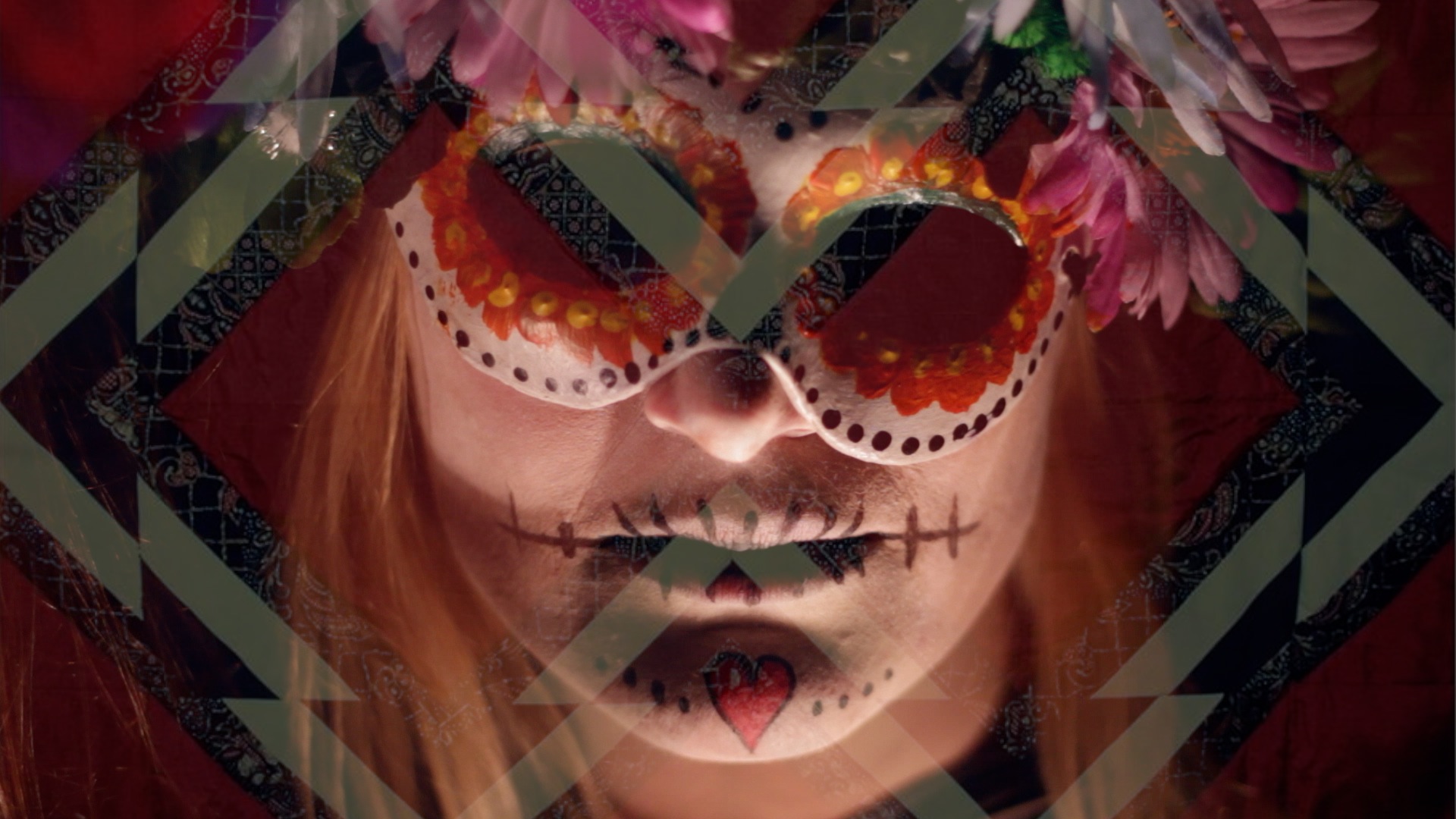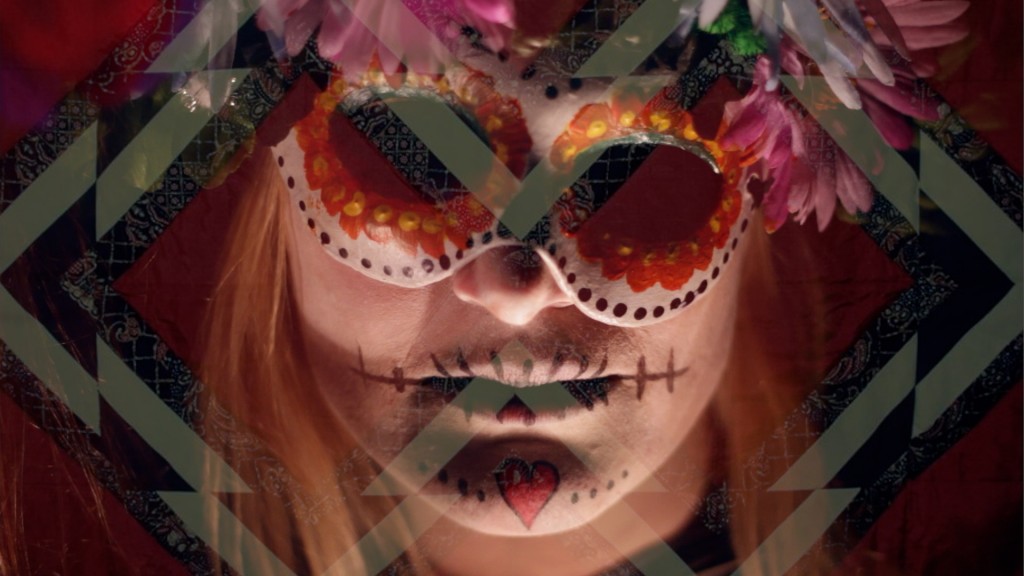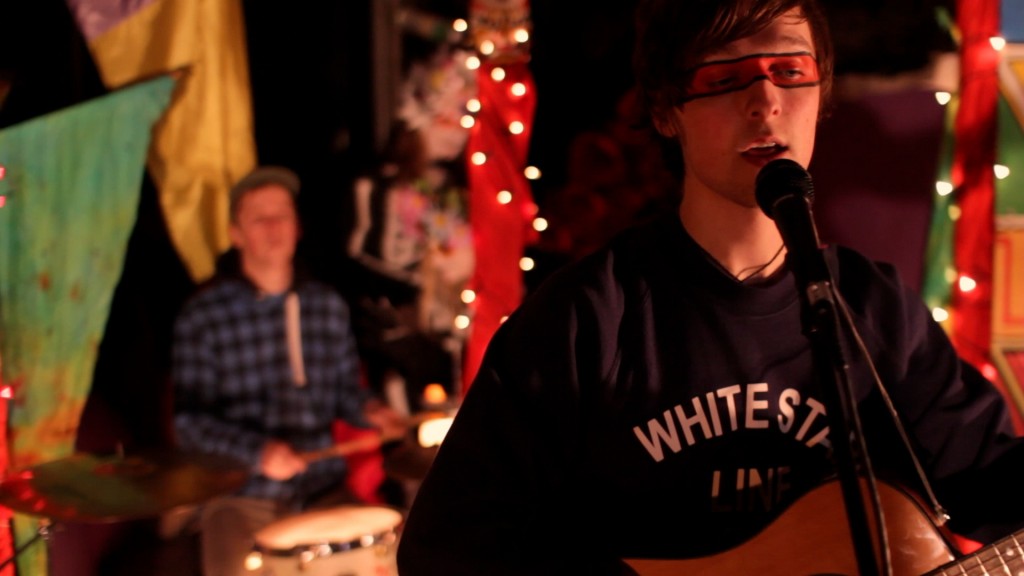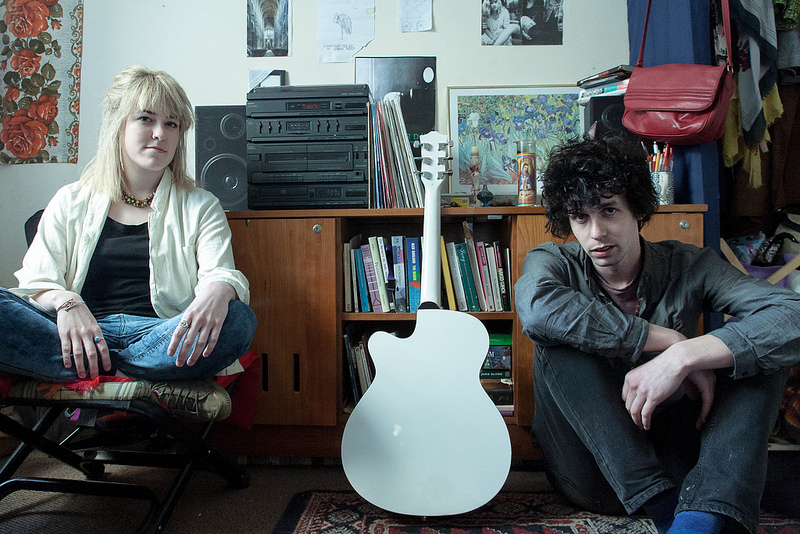Over the last couple of years, Joshua Burnside has steadily and confidently established himself as one of the country’s more distinctive songwriting voices. Having honed his own brand of increasingly experimental folk, the young artist returned to Belfast’s Whites Tavern recently to launch his latest release, double single ‘Desert Wine/Platonia’. A raucous success (not unlike the launch of his previous EP, If You’re Goin’ That Way the year previous) the show felt a fully-fledged “arrival” of a musician who has been dredging the treasure of his songwriting soul over the last few years.
In the latest installment of Frame by Frame – looking at the underlying inspiration behind and production of Irish music videos – Belfast-based photographer and filmmaker Colm Laverty talks to Burnside about the video for ‘Desert Wine’.
First off, tell us a little bit about your role on this music video.
Well, obviously I am the lead singer and guitarist in the video, although I have on occasion thought about getting someone else to perform as me, just to confuse people – maybe in the next one! I also edited it, which was an enjoyable learning curve as I had never used Final Cut before.
In a sentence, what sets ‘Desert Wine’ apart from other Northern Irish music videos?
I guess it has a psychedelic quality to it that I haven’t seen in other Northern Irish videos.
How was the idea conceived?
It evolved quite gradually from simply wanting to do something colourful, to then deciding to use Day of the Dead imagery, and then in the editing stage I started playing with overlays and I just thought it worked for the song.
What were your major influences coming into this project?
I suppose the video for ‘Art is Hard’ by Cursive was an influence in that I wanted the audience to be a part of the performance. So I wanted our skeleton girls to be performing for us at the same time as we were for them. Darren Lee’s work has been a great influence in general. I can’t really think of any others that specifically influenced this video, although I’m a big fan of Chris Cunnigham’s work as a video artist.
How well do you feel the ‘Desert Wine’ video reflects the themes and concepts behind the track itself?
I think the mood and imagery in the video ties in quite nicely with the lyrical content in a kind of abstract way (if that makes any sense). The desert could be a Mexican desert, with lyrics referring to death and the devil, but more generally the stream of conscious lyrical style is analogous to the psychedelic overlays.
Thematically and stylistically, how does this video compare to previous releases (in particular, ‘Black Dog Sin’)?
After ‘Black Dog Sin’ I was just itching to do something bursting with colour! Also we had more of a story, if you can call it that, going on between shots of us performing in ‘Black Dog Sin’. I still have a lot to learn, I am proud of ‘Desert Wine’ but I think ‘Black Dog Sin’ flows a bit better.
How large was the team working with you on the shoot?
Not large, David Boyd from the Beat Carnival was a huge help with setting everything up. We made a huge backdrop from all the stuff lying around in his warehouse; the band helped too obviously, and Jonathan Boyd filmed everything. So with our two skeletons we had about eight people. That was it really!
Was it always a conscious effort to produce the video DIY?
Yep. I made a video for ‘The Winding Straits’ from my previous EP a couple of years ago and I really enjoyed editing it. I’ve always kind of been into making videos so I wanted to see if I could so something a bit slicker with a decent SLR and Final Cut.
Where and when did the shoot take place?
It took place at the Beat Carnival Warehouse in Belfast on December 14.
The room has a certain Day of the Dead aesthetic to it – tell us a little about the artefacts featured in the video. Are there any pieces that particularly grabbed your attention?
Well I’ve always been interested in Mexican culture and imagery, and David just had all this great stuff lying around from the Day of the Dead carnival last year. The huge mobile skeleton you can see at about seven seconds in was really cool, it has these long dangly arms hung up by wires. There were also loads of great skeleton masks which we made good use of.
How well were you able to find the right balance between artistic freedom and compromise?
I guess that I didn’t have a very clear artistic vision when I started the project, so there wasn’t much compromise as the ideas and concept of the video simply evolved as we went along.
How was the band’s experience performing on camera?
I had a lot of fun. Although I always find it a little strange half-miming along to your own song.
Tell us a little bit about the editing process.
It didn’t take too long, and as I said it was an enjoyable learning curve. It’s a lot like producing and mixing a song… but with your eyes!
Has producing videos affected the way you now perceive your own music?
I think that the perfect combination of visual and aural stimulus can be the most powerfully evocative force, so I really love a good music video, but I’m not sure how it has affected my perception of my own music, if it has.
How do you feel Northern Irish music videos have changed over recent years?
There’s a lot more of them, which is cool. I don’t know if there is a particular Northern Irish style of music video, and if it has evolved. I haven’t watched enough to say, but it’d be great if there was.
In what ways has new technology affected your attitude toward music videos, and the industry as a whole?
I think that the video industry is following the example of music in that the technology is becoming cheaper and more people are going DIY; I couldn’t say how much of an impact this has had yet though.
Do you have a favourite local music video?
‘Stanley Kubrick’ by Clown Parlour.
What would be your nomination for the greatest music video of all time?
WelI, I love the video for ‘I Don’t Wanna Grow Up’ by Tom Waits – it’s so simple and funny – but I think I would nominate the video for ‘All is Full of Love’ by Bjork – lesbian Bjork-bots beat everything (ed: the second Frame by Frame interviewee in a row to choose that video).






